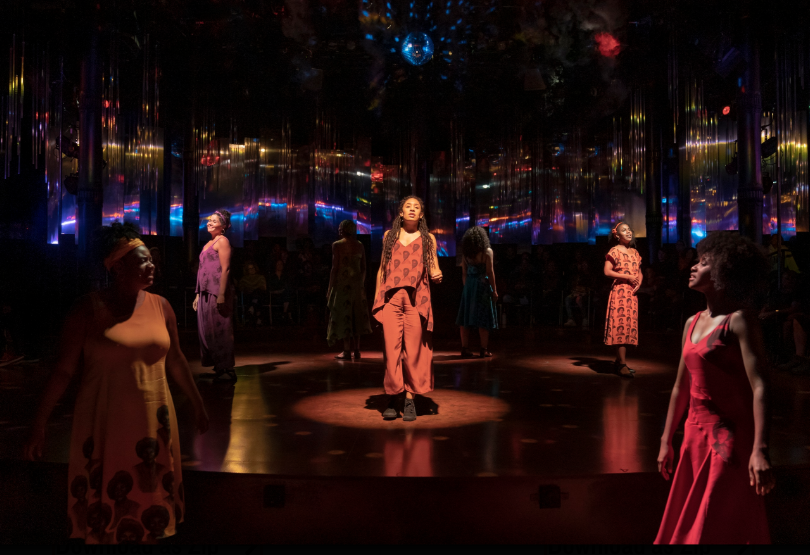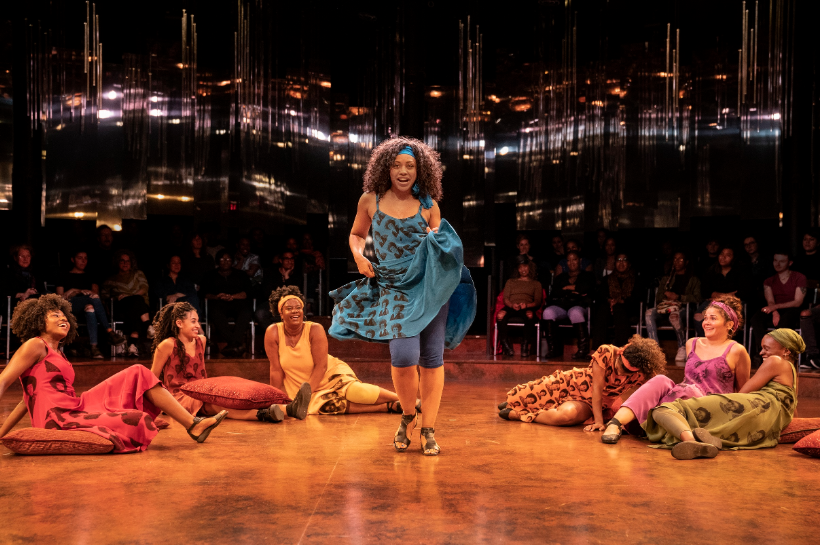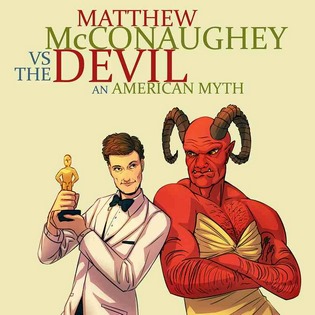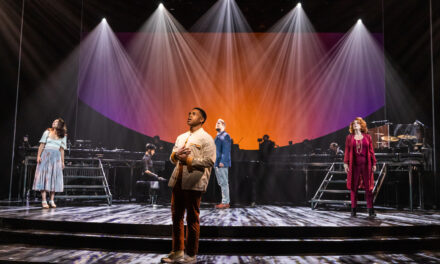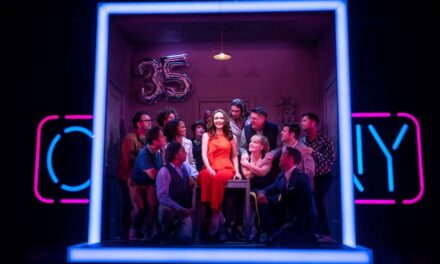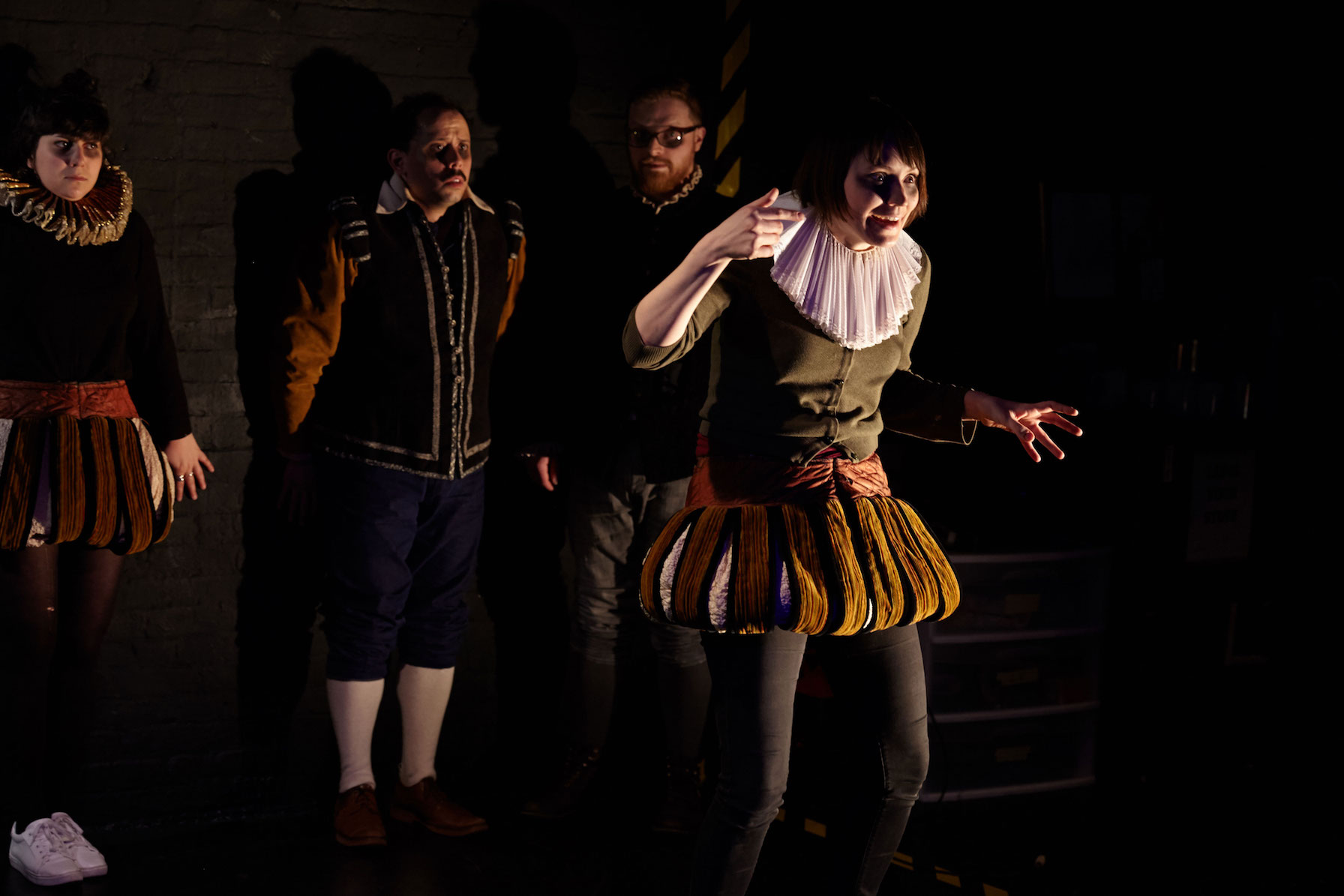By Samuel L. Leiter
A remarkable development during the 1970s was the dynamic, sudden, and historically significant breakout of activity among black dramatists, mostly in nonprofit theatres. However, a then record-breaking nine works also made it to the Great White Way. Two—The River Niger and Home—managed decent runs, and one, for colored girls who have considered suicide/when the rainbow is enuf, achieved 742 performances, before eventually being adapted for TV and film.
Now getting a sterling revival at the Public Theater, where it played in 1976 (following Off-off origins) before hitting Broadway, for colored girls . . . is by Ntzoke Shange, who died a year ago at 70. She provided the theatre with a refreshing new voice and style in this work, whose success (including 120 Off-Broadway showings) was surprising because it was not a “play” but a “choreopoem.” In other words, it was a series of poetic prose and verse monologues, with occasional choral passages, spoken and danced on a practically bare stage by a group of seven black actresses clad in simple dance costumes, each denoted by a specific color.
The feminist/civil rights-oriented material deals with a variety of socio-emotional issues affecting women of color. Although only a portion concerns abused women, that theme was what many considered its most indelible. Shange herself had married at 19, was divorced, and attempted suicide four times. She played the Lady in Orange in the original cast.
for colored girls . . . blends direct-address storytelling with music and dance, the language being an explosive mixture of familiar and idiosyncratic colloquial syntax, sometimes elusively elliptical but providing a sea of verbal melodies in which good actresses can swim.
This production, excitingly staged by Leah C. Gardiner, with a powerful blues, gospel, and pop score by Martha Redbone (supplemented by things like Martha and the Vandellas singing “Dancing in the Street”), and sensationally sinuous, original choreography by Camille A. Brown, is enhanced by an incomparable ensemble of gifted singer-dancer-actresses. Just as memorable is the hearing-impaired Alexandria Wailes, as the Lady in Purple, her words spoken by one of her costars. Wailes’s expressivity, enhanced by her use of ASL, holds you like a magnet.
Shange’s choreopoem is a sui generis achievement that satisfies more as a theatrical experience than as dramatic literature. Its characters—colored both by their many skin hues and Toni-Leslie James’s vivid blue, brown, orange, red, yellow, green, and purple costumes—are more the expression of feelings and experiences than actual people. With a few exceptions, their stories are outlines rather than substantial minidramas. Nevertheless, these women grip you with their passion, their insights, and their charismatic presences.
Myung Hee Cho has turned the Public’s Martinson Hall into a disco-like space, with mirrored walls both on stage and in the audience, a disco ball overhead, and slivers of Lucite hanging everywhere. Lit by Jiyoun Chang with creative panache, the hall is configured in theatre-in-the-round style, with approximately 60 people seated around three sides of the circular stage. (Some attendees have complained about the auditory and visual quality of the experience.)
Shange is preoccupied with issues of women’s empowerment and sisterhood, with situations ranging from benign to bloody, including rape, abortion, and violence. Some are barely race-related, others sharply so. The original sequence has been reorganized somewhat, with new material also included during the work’s intermissionless 90-minutes.
It now uses for its first narrative, “toussaint,” in which the Lady in Brown (Celia Chevalier) represents a book-obsessed eight-year-old becoming enamored of Haitian leader Toussaint L’Ouverture before transferring her affections to a boy also named Toussaint.
In the original, the first monologue is “graduation nite,” which has been moved to later in the show. Presented by the Lady in Yellow (D. Woods, excellently understudying Adrienne C. Moore when I attended), it tells of the wild night of her high school graduation, when she lost her virginity in the back seat of a Buick.
Neither of these tales is particularly about women in crisis. Of course, such material does appear, most potently in the Lady in Red’s (Jayme Lawson) “a nite with beau willie brown,” the single most dramatic episode. Unforgettable, it describes an abusive man who commits an unspeakable act when trying to persuade the lady to marry him.
Space doesn’t allow expansive shout-outs to all the extraordinary actresses involved. In addition to those I’ve named, I must nonetheless express my admiration for Sasha Allen as the Lady in Blue, Danaya Esperanza as the Lady in Orange, and Okwui Okpokwasili as the Lady in Green. They create a rainbow that should be enuf for any theatre lover.
Photos: Joan Marcus
for colored girls who have considered suicide/when the rainbow is enuf
Public Theater/Martinson Hall
425 Lafayette St., NYC
Through December 8 www.publictheater.org


